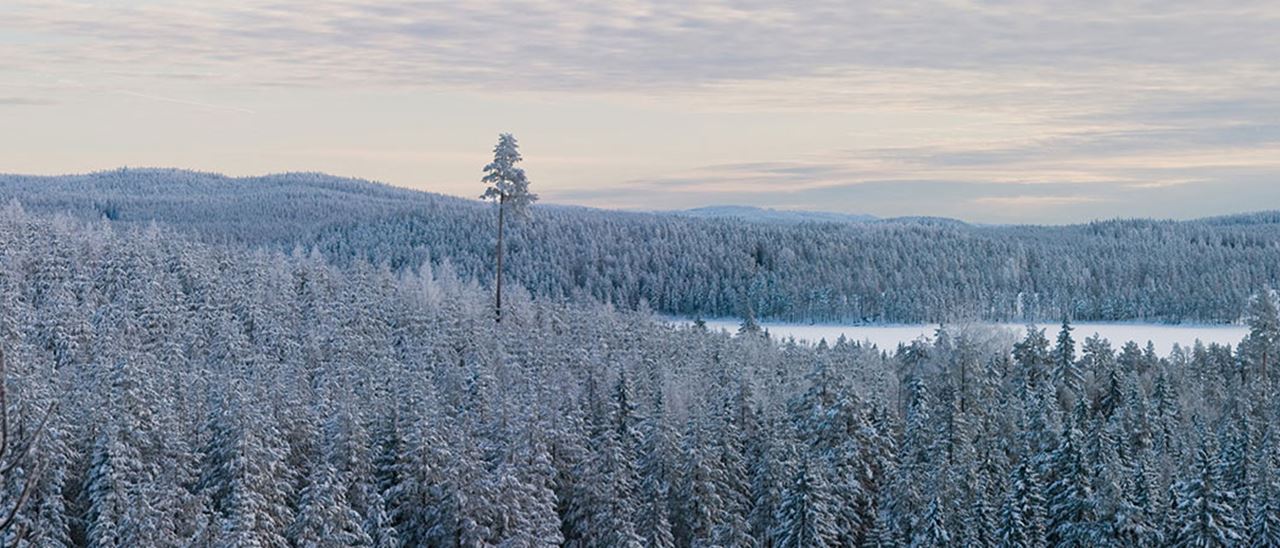Our ecoparks – forest landscapes with plenty of space
Ecoparks are large contiguous landscapes with high conservation values and high ecological ambitions. The parks have an average size of approximately 5,000 hectares (50 square kilometres) and each has a unique ecological character. In these ecoparks, where ecology takes precedence over commercial interests, many threatened species can live and flourish.
Large contiguous landscapes
In the large landscapes of the ecoparks, where ecology takes precedence over commercial interests, many threatened species can live and flourish. At least 50% of the total area in each ecopark is always set aside for nature conservation while sustainable forestry is conducted in the remaining area. The ecoparks also include several of our most important recreational forests which provide opportunities for increased eco-tourism.
37 ecoparks from north to south
Sveaskog decided to create 37 ecoparks, which correspond to 5% of our productive forest land. The ecoparks contain a total of 175,000 hectares of forest land of which over 100,000 hectares are protected through legally binding ecopark agreements with the Swedish Forest Agency.
The first ecopark to be inaugurated was Omberg Ecopark in 2003. The most recent and 37th ecopark, Öjesjöbrännan Ecopark, was opened in 2016.
The ecoparks are located throughout Sweden, from the lichen-clad primeval spruce forests in the north to the blue anemone-carpeted beech forests in the south.
- Q&A about ecoparks
Why ecoparks?
From a bird’s eye view, the Swedish forest landscape has become increasingly chequered. Areas with old, untouched forest lie like islands in a sea of production forests. But a Lesser Spotted Woodpecker cannot survive in one small square. He needs an entire landscape to move around in with at least one-third deciduous forest.
Large landscapes with a high proportion of forest that they can enjoy are important to woodpeckers and many other species. This also applies to many people. Therefore we have created the ecoparks as a complement to other types of protection for forests and land.
Active nature conservation
In the ecoparks we work to both protect and develop high conservation values. This work is carried out in accordance with management plans that we draw up in consultation with authorities, non-profit organisations, reindeer herders and other stakeholders. This habitat management includes burning and damming forests, felling coniferous forests to make room for new deciduous forests and returning animals to old grazing lands. After just five years, the ecological conditions in the ecoparks have improved.
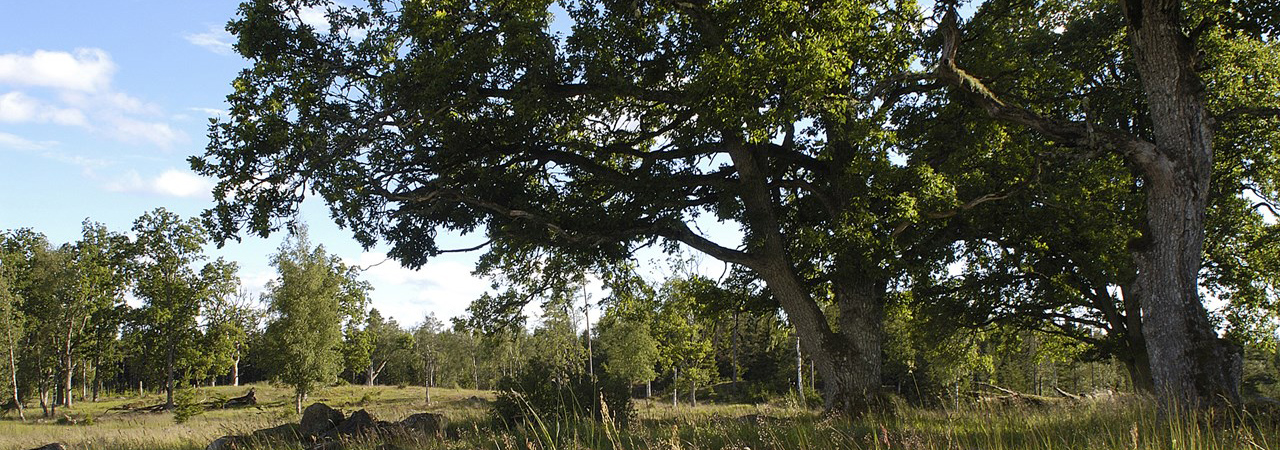
Halle-Hunneberg Ecopark
Ecoparks protect and develop
An ecopark does not only mean protection, it also includes restoration of conservation values and a large-scale transformation of the landscape.
More deciduous trees
For example, we are making intensive efforts to increase the proportion of deciduous trees in the ecoparks. Old deciduous forests have become scarce in Sweden and they are exactly what is needed by many threatened species today. By cleaning out coniferous trees we create large areas of deciduous forest every year. In just one year, a dense mixed forest where young spruce dominate can become a light and open birch forest which is attractive for animals, plants and people.
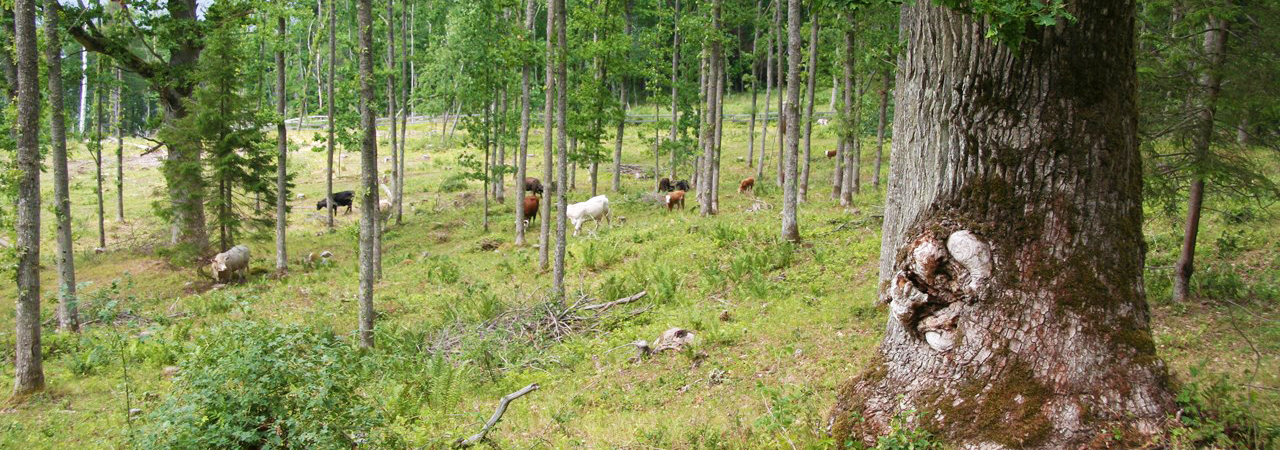
Omberg Ecopark
Restoring wetlands
Another method for actively recreating conservation values is to refill old dikes. In this way we restore old wetlands to which a swarm of life – from wading birds to salamanders and dragonflies – can soon return.
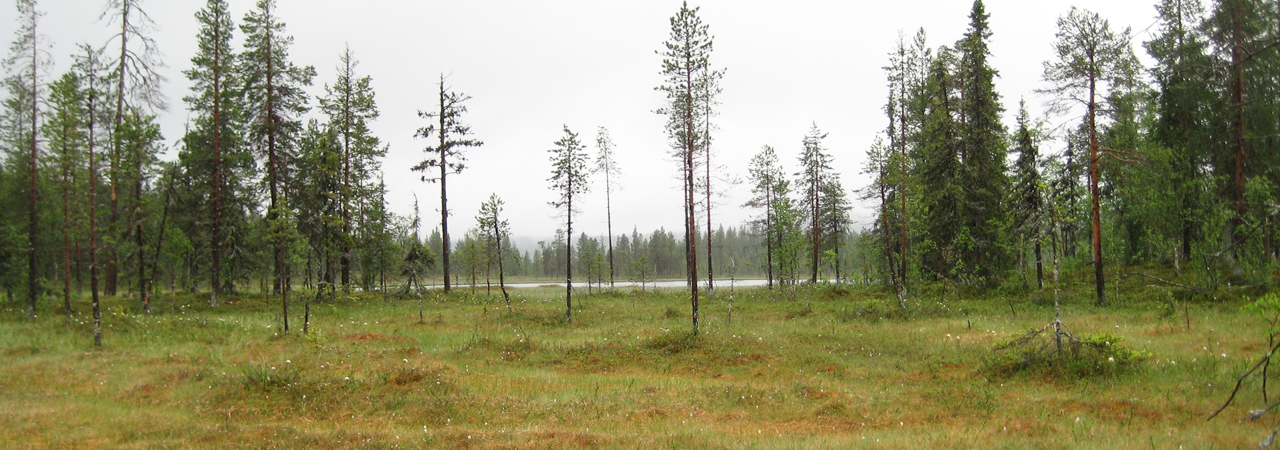
Luottåive Ecopark
Nature conservation burning
Controlled nature conservation burning is also carried out in the ecoparks to preserve fire-dependent species, such as the Black Fire Beetle and the Orchid Blue flower. Forest fires have been part of the coniferous forest’s ecosystem for so long that many forest species have adapted to them. Since people learned how to stop the fires at the end of the eighteenth century, these animals and plants have had difficulty surviving. However, they are brilliant at finding the few fires that still occur and while the ashes are still smouldering, insects flock to the fire-razed area.
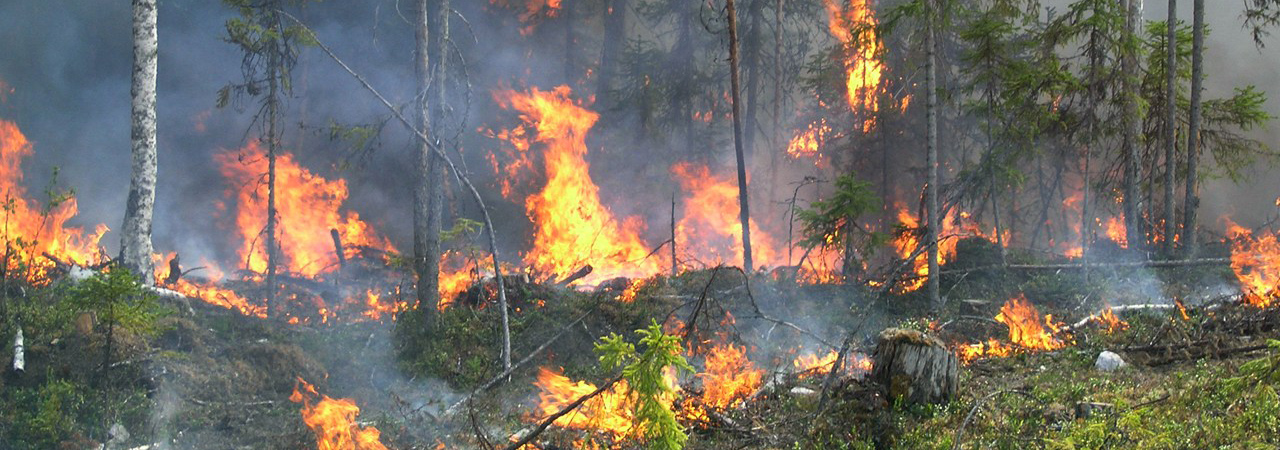
Ejheden Ecopark
Ecoparks for outdoor activities and eco-tourism
Just seeing a tree through the window has a positive effect on health and a walk in the forest can work wonders. For many people, access to the countryside is part of our Swedish welfare as well as an obvious part of long-term sustainable society.
Our aim is that the ecoparks will offer greater opportunities for more people to experience nature. We therefore provide information about the ecoparks as well as noticeboards, resting places and hiking trails. The different character of these areas provides scope for everything from solitary wilderness adventures to sunny picnics, horse riding, paddling, fishing, nature tours and much more.
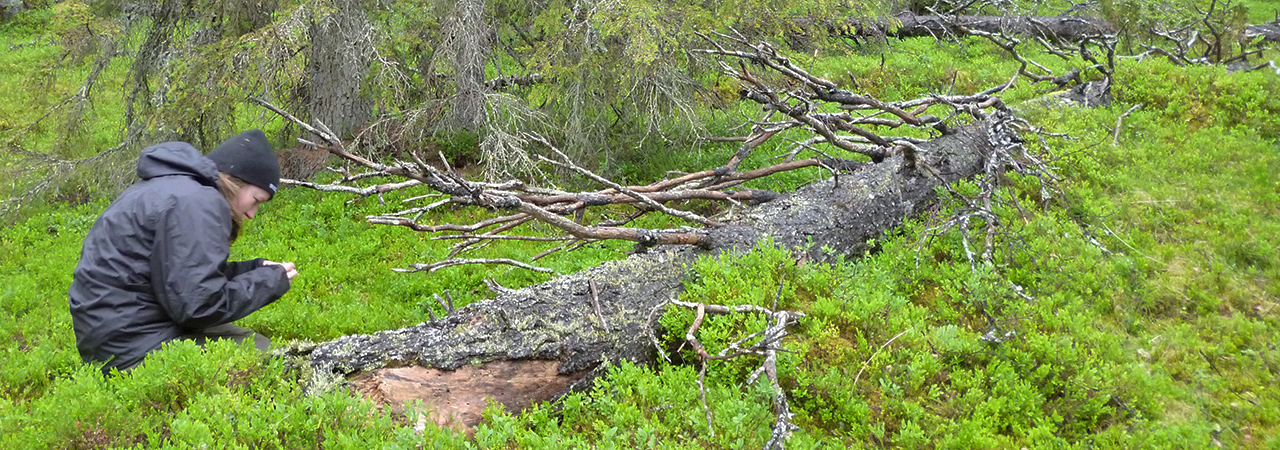
Karhuvaara Ecopark
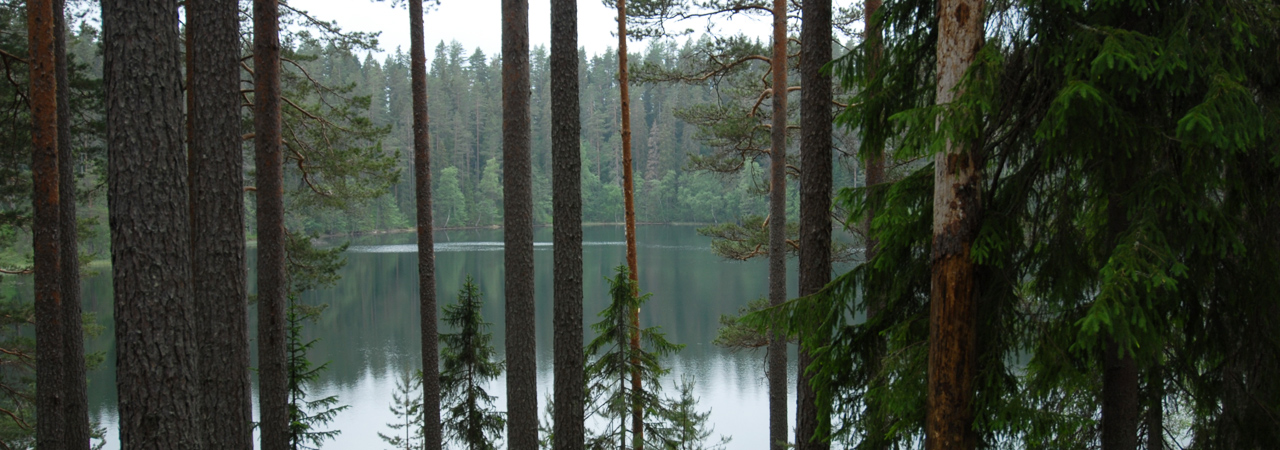
Malingsbo Ecopark
Hunting and fishing in the ecoparks
Some form of hunting is conducted in all the ecoparks. In most of them one or more hunting teams lease land from us. Many of these teams also welcome guest hunters and in some areas there are tourism companies which arrange hunting activities.
All hunting and game on our lands is subject to long-term and responsible management. In the ecoparks we raise the standard still further with even better knowledge of game stocks and their condition.
In many ecoparks there are lakes and waterways that offer excellent opportunities for fishing. Where fishing is popular, the waters are developed through active fish conservation efforts.
As a visitor you can buy a hunting permit or fishing permit in several of our ecoparks.
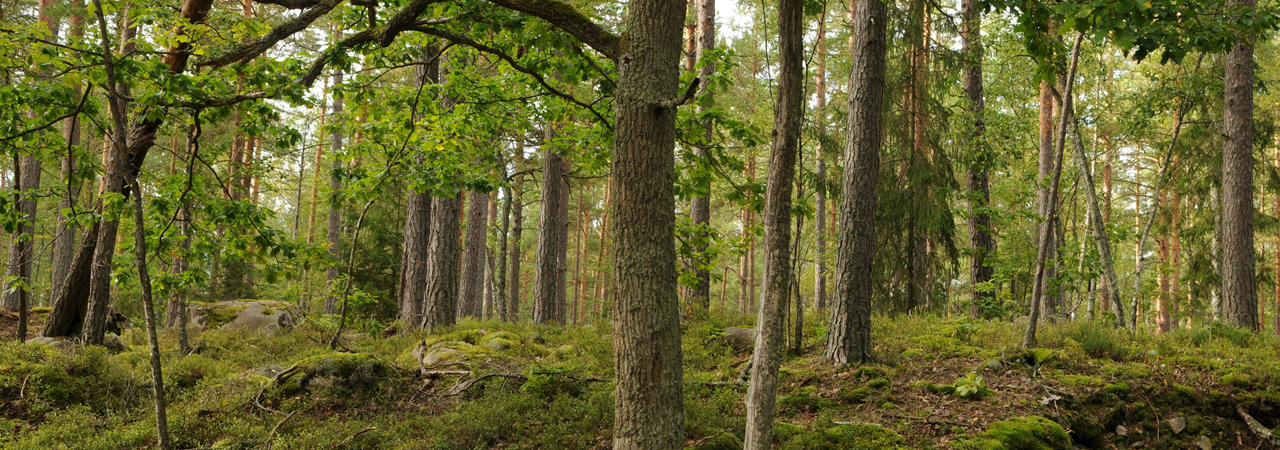
Hornsö Ecopark
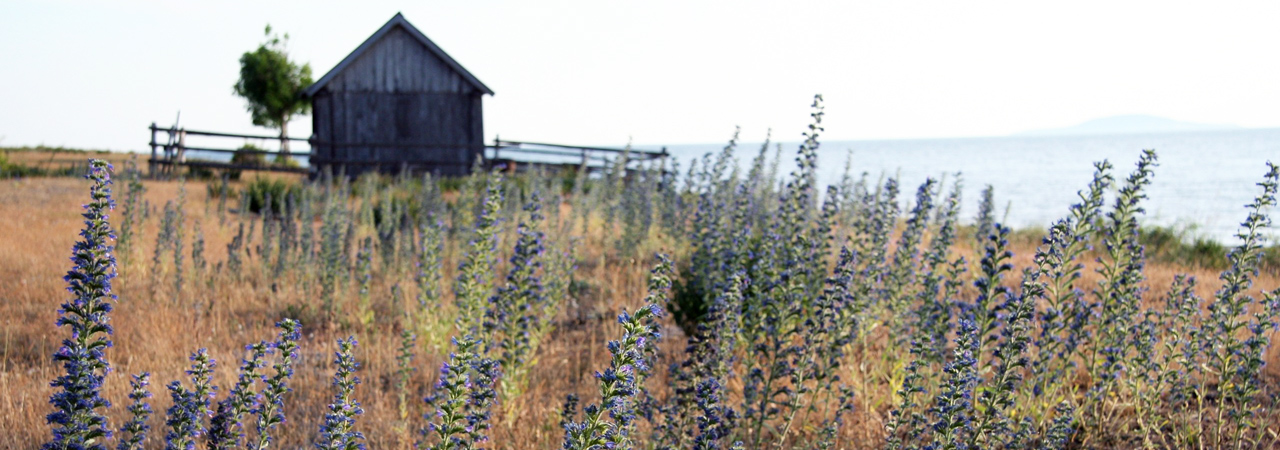
Böda Ecopark
Q&A about ecoparks
What is an ecopark on Sveaskog’s land?
- An ecopark is a large, contiguous forest landscape, with high conservation values.
- Omberg Ecopark in Östergötland was the first and was inaugurated in 2003.
- Today there are 37 ecoparks from northern to southern Sweden.
- An ecopark is at least 1,000 hectares and an average of 5,000 hectares.
- At least half of the land is set aside for nature conservation while remaining areas support sustainable forestry.
Why did Sveaskog create the ecoparks?
Many researchers claim that there is a lack of large landscapes with a high proportion of biologically valuable forests. For woodpeckers, birds of prey and many other species, large landscapes where there is a high proportion of forest that they can enjoy are important. The ecoparks were therefore created on the initiative of Sveaskog as a complement to other types of protection for forests and land.
What is the purpose of Sveaskog’s ecoparks?
We want to help to preserve and develop conservation values in large, contiguous forest landscapes with high levels of biodiversity. The ecoparks provide an opportunity to create new habitats and conservation values that would not have happened otherwise. In the ecoparks we set aside at least half of the area for conservation combined with active management and adapted forestry.
How is an ecopark area chosen?
The area is chosen on the basis of an inventory of the company’s forest holdings. The proposed areas already have high conservation values or major potential for restoration so that conservation values can be strengthened and developed. The selection of forests is made in consultation with employees, authorities, nature conservation organisations and researchers (both national and international).
How are Sveaskog’s ecoparks created?
Once an inventory is made and a forest landscape is proposed as an ecopark, a tailor-made management plan is drawn up, called an ecopark plan. This is then submitted for approval to the Swedish Forest Agency and the County Administrative Board and in some cases local stakeholder groups in the counties affected. The plan is finally adopted in a 50-year ecopark agreement made between Sveaskog and the Swedish Forest Agency. This is the longest period for which this type of agreement can be written in Sweden. Finally, the ecopark is inaugurated.
What is the difference between an ecopark and a nature reserve?
An ecopark is owned, formed and administered by Sveaskog while a nature reserve is manged by a county administrative board, municipality or foundation. Another difference is size. In southern Sweden nature reserves are generally between 50 and 200 hectares. The ecoparks are considerably larger than this with an average of 5,000 hectares. Furthermore, ecoparks are administered through a tailor-made management plan (ecopark plan) and at least half is set aside for nature conservation while the remaining area supports sustainable forestry. You can read what the Environmental Protection Agency says about nature reserves here.
How does Sveaskog work with ecoparks?
We work according to the special plan drawn up for every ecopark in close cooperation with authorities, external expertise and stakeholder organisations. Habitat management, for example, means that we burn forests, restore wetlands, fell coniferous forests to make way for new deciduous forests, and return animals to old grazing lands. After just five years, the ecological conditions in the ecoparks have improved.
Work such as nature conservation, game and water management, forest management and general supervision is conducted by skilled and trained staff at our local offices. We have a regular dialogue with authorities, stakeholders and experts.
Do you ever not follow an adopted ecopark plan?
Sometimes we need to adjust the plan when perhaps circumstances have changed or new knowledge has emerged. In such cases we always check this with experts, authorities and stakeholder organisations.
Of course it can also happen that mistakes are made. This is naturally something we regret and as soon as possible try to correct or compensate in another manner in order to ensure compliance with the ecopark plans in our ecoparks.
How do you measure achievement of objectives – forests with high conservation values?
We monitor developments in our ecoparks using a monitoring programme we have developed helped by external researchers. We study, among other things, how birds and insects have responded to the habitat management measures we have carried out.
The ecoparks already have outstanding biodiversity. This is why they are selected as prioritised landscapes for nature conservation. Some management measures can show results within just a few years, but sometimes it can take several decades before the results can be seen.
Why is forestry conducted in the ecoparks?
Ecoparks are large, contiguous forest landscapes. The average size of an ecopark is 5,000 hectares. At least half of an ecopark area is used for nature conservation, but in most cases more than half is actually set aside.
In such large landscapes there are often areas that do not have high conservation values that need to be protected or restored. Then we have assessed that it is better to continue to manage and fell the forest. The value of being able to set aside such large areas with at least half for nature conservation is significantly greater than if we were to set aside all the land in an area entirely for nature conservation. This would result in fewer and smaller ecoparks which would counteract that purpose of creating large, contiguous forest landscapes with high conservation values.
How much do you fell in the ecoparks?
According to plans for the care and management of the ecoparks, 36% is planned for forestry. Of this 36%, 2.3% has been felled so far.
How does forestry affect biodiversity?
Conducting forestry in an ecopark does not need to have a negative impact on biodiversity across the entre landscape. By adapting how we retain areas in the parts of the set-aside forest where forestry is conducted in order to strengthen conservation values, the diversity of the entire ecopark can increase over time.
How are old forests protected in the ecoparks?
All our ecoparks contain considerably more old forests than the average forest landscape in Sweden. Age in itself does not necessarily mean that there are high conservation values. Many of our production forests that have been worked for a long time are in this age group. It is conservation values that decide whether a forest should be protected, not age.
Are already protected forests included in the area that is not felled?
Yes they can be since set asides in the ecoparks can consist of reserves owned by Sveaskog. All statistics are reported to and reviewed by the authorities, so no double counting takes place.
What types of consideration and protection are used in the ecoparks?
Protection in the ecoparks includes:
- Reserves that we own
- Set asides of entire forest stands in the form of nature conservation with management (NS) and nature conservation untouched (NO).
- Consideration shown in production forests includes small biotopes, forest groups, dead wood and old trees.
Is there a risk protected forests will be counted twice, for example that a reserve is counted twice in ecoparks?
No. All statistics are reported to and reviewed by the authorities when they compile and report statistics for the entire country.
How are hunting and fishing affected in an ecopark?
An ecopark is no obstacle to hunting and fishing, on the contrary. We would like to see different types of outdoor activities and eco-tourism in the ecoparks.
Does the right to roam apply in an ecopark?
Yes, it applies in all ecoparks. Some ecoparks include nature reserves where special rules apply which are usually displayed on information panels. The right to roam basically means that we can move freely in forests and land provided we take animals and plants into consideration. You can read more about what is permitted or not at www.allemansratten.se

